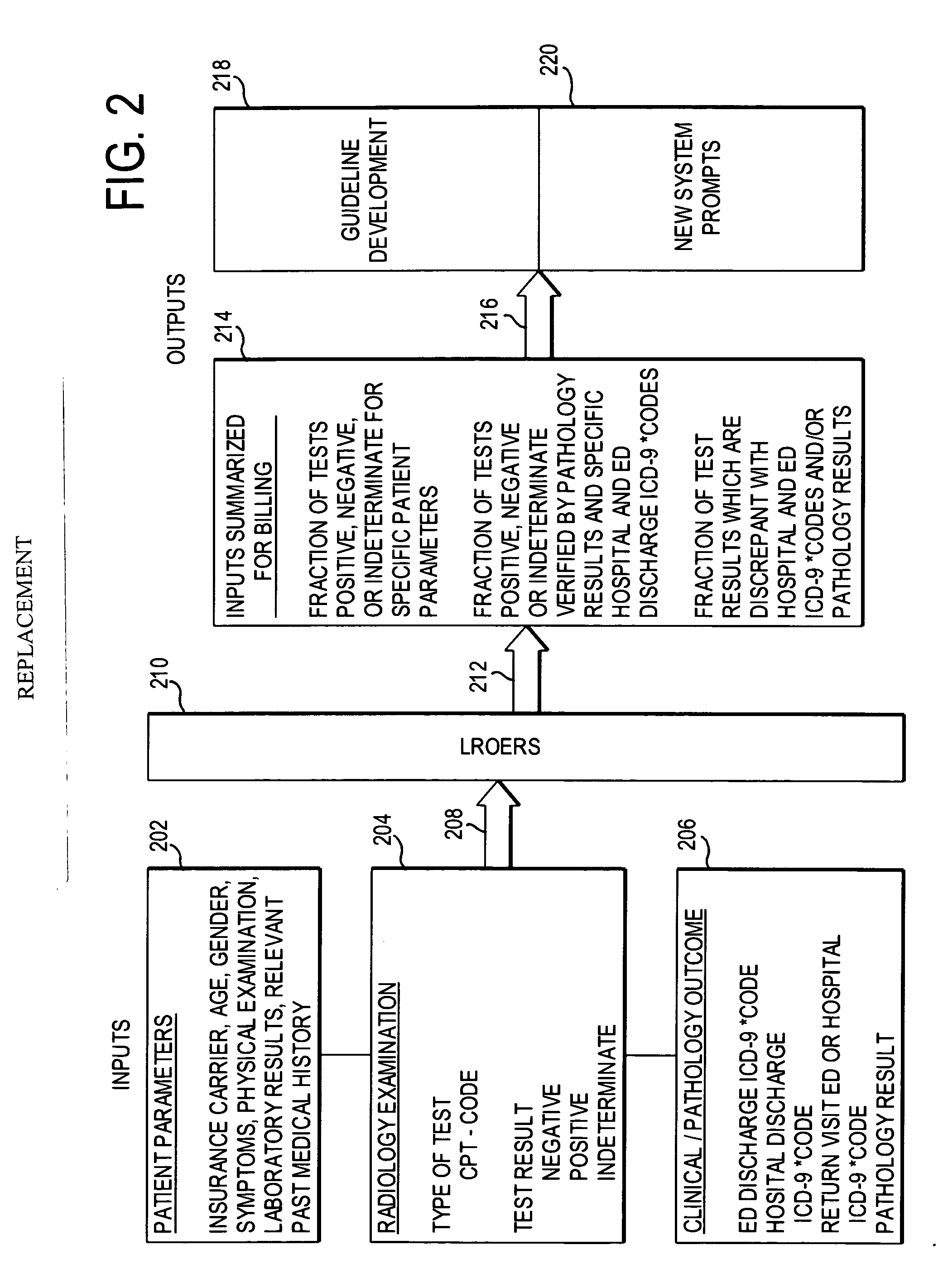Radiology order entry and reporting system
a reporting system and order entry technology, applied in the field of order entry and reporting system, can solve the problems of additional radiologic imaging, large hidden cost in healthcare, and abnormal imaging studies that are often not conveyed to the appropriate healthcare provider, so as to reduce the improper selection of radiologic examinations, facilitate use, and improve the accuracy of information flow
- Summary
- Abstract
- Description
- Claims
- Application Information
AI Technical Summary
Benefits of technology
Problems solved by technology
Method used
Image
Examples
Embodiment Construction
[0063] A preferred embodiment of the present invention will be set forth in detail with reference to the drawings, in which like reference numerals refer to like elements or steps throughout.
[0064]FIG. 1 shows an overview of the preferred embodiment. The system 100 according to the preferred embodiment uses two portable electronic chart / clipboard devices, a first device 102 used in an emergency department of a hospital and a second device 104 used in a radiology department. The devices 102 and 104 communicate over a link 106, which can be a direct wireless link or can include a stationary device or network of stationary devices; the same is true of communication links between the device 102 or 104 and any other device. Hardware on which the devices 102 and 104 can be implemented is known in the art, as are various standards for allowing them to communicate wirelessly, such as variations on IEEE 802.11.
[0065] As shown in FIG. 1, various information concerning a patient and a radiol...
PUM
 Login to View More
Login to View More Abstract
Description
Claims
Application Information
 Login to View More
Login to View More - R&D
- Intellectual Property
- Life Sciences
- Materials
- Tech Scout
- Unparalleled Data Quality
- Higher Quality Content
- 60% Fewer Hallucinations
Browse by: Latest US Patents, China's latest patents, Technical Efficacy Thesaurus, Application Domain, Technology Topic, Popular Technical Reports.
© 2025 PatSnap. All rights reserved.Legal|Privacy policy|Modern Slavery Act Transparency Statement|Sitemap|About US| Contact US: help@patsnap.com



